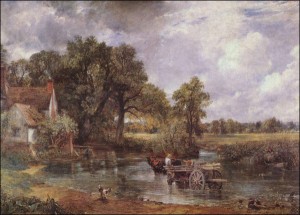All links are to Wikipedia entries.
Government, Politics, and War:
- January 29: King George III dies after 59 years on the throne. The Prince Regent succeeds as King George IV. (His coronation does not take place until July 19, 1821.)
- February 23: The Cato Street Conspiracy is uncovered, in which a group of radical Spenceans, angered by the Peterloo Massacre and the Six Acts, plan to assassinate the prime minister and all his cabinet ministers. Their hope is to overthrow the government and oversee a radical revolution, similar to the French Revolution. One of the conspirators happened to be an agent of the Home Office, who insured that the operation was foiled by a group of Bow Street Runners. Most of the conspirators were convicted of treason and hung.
- April 1: A Proclamation, signed “By order of the Committee of Organisation for forming a Provisional Government”, begins the “Radical War” in Scotland.
- May 1: Cato Street conspirators are hanged and beheaded for high treason. They will be the last beheadings in England.
- June: Princess Caroline (now Queen Consort) returns to England. Her husband refuses to acknowledge her as Queen and riots break out in support of her.
- August: The Pains and Penalties Bill is introduced in Parliament at the request of George IV, with the aim of dissolving his marriage to Caroline and depriving her of the title Queen. After a hearing in the House of Lords lasting through November, the bill is thrown out. (The following July, Caroline is barred from the king’s coronation, and dies 3 weeks later.)
Society and Social History:
- January 23: The Duke of Kent dies, leaving his infant daughter Victoria one step closer to the throne.
- February 1: Tom Cribb retains his English championship with a first round knockout of Jack Carter in London.
Literature, Journalism, and Publishing:
- Percy Bysshe Shelley publishes Prometheus Unbound: A Lyrical Drama in Four Acts, With Other Poems. “To a Skylark” is one of the poems published here for the first time.
- Walter Scott publishes The Monastery and The Abbot, and is made a baronet by George IV. he also publishes The Poetical Works of Sir Walter Scott, in 12 volumes, the first collected edition.
- Publication of the last of William Blake’s prophetic books, Jerusalem: The Emanation of the Giant Albion, is completed.
- Thomas Love Peacock publishes The Four Ages of Poetry, which prompted Shelley to write his Defence of Poetry.
- Georg Wilhelm Friedrich Hegel‘s Social Classes is published.
- May: John Keats first publishes “La Belle Dame sans Merci” in the May issue of the Indicator.
Art, Architecture, and Design:
- Bristol’s Royal York Crescent is completed.
- Francisco de Goya paints Saturn Devouring His Children.
- The Book of Job in the Old Testament is published with illustrations by William Blake.
- John Constable paints The Hay Wain.
- Eastnor Castle, Herefordshire is completed by architect Robert Smirke.
- March 11: Sir Thomas Lawrence is named president of the Royal Academy upon the death of Benjamin West.
- April 8: The Venus de Milo is discovered in the Greek Island of Melos.
Science and Industry:
- The Royal Astronomical Society is founded by, among others, inventor and mathematician Charles Babbage and astronomer Sir John Frederick Herschel.
- Charles Xavier Thomas de Colmar makes his “Arithmometer”, the first mass-produced calculator.
- British inventor Warren De la Rue creates the first light bulb using a vacuum tube, although its use of a platinum coil makes it commercially unviable.
- July 26: The Union Chain Bridge across the River Tweed between England and Scotland opens. It is a wrought iron suspension bridge designed by Captain Samuel Brown. With a span of 449 feet, it is the world’s longest vehicular bridge at this time, and it is the first wrought iron vehicular suspension bridge of its type in Britain.
- August: Regent’s Canal opens after a decade of construction to link the Grand Junction Canal’s Paddington branch around the city to Limehouse. The eight-and-a-half-mile waterway has cost £772,000 (twice the original estimate), has two tunnels, 12 locks, and in its first year carries 120,000 tons of cargo.
Natural History and Exploration:
- January 28: An Imperial Russian Navy expedition led by Fabian Gottlieb von Bellingshausen and Mikhail Petrovich Lazarev sights the coast of Antarctica for the first time. (In 1773 James Cook crossed the Antarctic Circle for the first time, but although he discovered nearby islands, he did not catch sight of Antarctica itself.)
- June 19: British naturalist and botanist Sir Joseph Banks dies at age 77, having served as president of the Royal Society since 1778.






